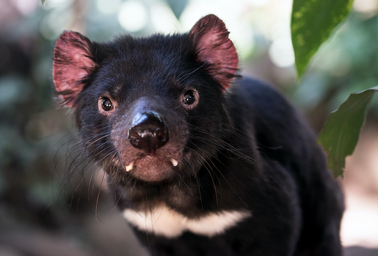A keystone species is a race of mass importance to an ecosystem. The removal of the keystone can result in a detrimental snowball effect in a biosphere, causing for a complete shift in the ecology and wildlife presence in a biophysical environment.
In the 90s, the gray wolf species was reintroduced to Yellowstone National Park to help combat the overpopulation of elk, who sat at the top of the food chain with no predators to compete with. The elk species controlled all of the nutrients and plantation in the park, which starved many other species and caused their decline. After their reintroduction, the wolves quickly stabilized the elk population, so that they were no longer overrunning the terrain.
The coyote population also declined due to the competition of the wolves, which allowed the beaver and rabbit populations to regenerate. Gray wolves have since been taken off the endangered animals list, because of their prosperity since returning the Yellowstone National Park. The greenery has been restored to its original flourishing state due to the decline in elk species. The rabbit and beaver population increased as a result of the decline of coyote dominance. Gray wolves are the prime example of a keystone species that provides a purely mutualistic relationship with an ecosystem.
Aussie Ark is an Australian wildlife protection non-profit organization that focuses on renewing wildlife species and habitats in Australia. The organization was founded by John Weigel, the Director of Australian Reptile Park, with the goal of saving the Tasmanian devil species from extinction. In the mid-90s, a mysterious facial tumor disease struck the animals and began wiping them out; to this day there is still no cure. To counter the disease, the Aussie Ark organization released 26 Tasmanian devils into mainland Australia. Tasmanian devils were once native to mainland Australia but were wiped out over 3,000 years ago due to wild dingoes, which are also native to the country. The last remaining Tasmanian devils resided on the island of Tasmania, South of Australia, where the facial tumor disease plagued the species.

The 18-pound marsupials with black and brown fur have a massive head and neck, permitting for the mammals to have one of the strongest bites per unit body mass of any surviving land mammal predators today. Tasmanian devils are another example of a keystone species, being that they act as the top of the food chain competitors with other predators in mainland Australia.
The fox and cat population has become invasive in mainland Australia. With no competitors or predators, cats and the foxes have single-handedly caused 40 different mammal species to go extinct, with no natural solution besides the introduction of the Tasmanian devil.
Australia and Yellowstone act as two examples of the reintroduction of a species to better the ecosystem and balance the quality of life for all living organisms involved. With the continuation of this process, many animals can be saved from extinction and endangerment, and re-balance many biospheres on Earth. Without the reintroduction of the Tasmanian devil by Aussie Ark, the last memory left of the species would be Taz from Looney Tunes.
Want to see more HCFSU? Be sure to like us on Facebook and follow us on Instagram, Twitter, TikTok and Pinterest!



